Self-service technologies are permeating almost every industry these days. Self-servicing is not unique to the century but even in the early 1950s, the concept was prevalent in the retail sector. It was the vending machines which emerged around in the 1800s that actually showed the early signs of self-servicing. A few decades later, the automated teller machine was invented, and the first interactive kiosk was developed in 1977 to allow students and teachers of a university to find media, directories, and other information. Gradually, self-service kiosks entered commercial use, but it took a long term for it to become the actual norm. Anyhow, they are finally an undeniable way to secure a competitive edge in the market today.
The transition from employees working on the floor to customers serving themselves took a long while. In this blog post, we’ll be having a closer look at how this transition helped in providing the ultimate customer experience and more.
Try Hexnode to set up and manage self-service kiosks
Self-servicing and changing customer behavior
Self-service kiosk - explained:
A self-service kiosk is an interactive terminal that facilitates an action or displays a piece of information and automate, eliminate or streamline wait or cost by giving customers the control to get things done on their own terms.
The theory of letting customers do things themselves have already proved to be the future of customer service. But, during the initial stages of this revolution, the consumer base was totally reluctant to accept this new way of servicing as it was believed to be beneficial only to the businesses. Until then, there were staffs to serve customers at all points. So, the difficult interfaces to save cost by essentially replacing the staff who assisted the customers were generally validated as only favoring corporations. Later on, with the technology-based innovations and integration of high-tech communication, businesses were able to overcome all the self-service skeptics and provide an easy-to-use interface with better intuitive software for these self-standing structures. Since then, self-service kiosks are establishing themselves as a staple of customer services which provide the kind of experience that empowers the customers with greater choice and flexibility without sacrificing growth or profit margin for the businesses.
With automation makes everything done at far better than humans, people are associating self-service machines as saving time and cost for themselves. Thus, a technology overhaul has completely changed customer behavior and self-servicing machines garnered mass appeal as an everyday tool for interaction. There is little to no interaction with the human staff needed unless something goes wrong or the desired outcomes are not achieved.
Use cases
Whether the service is registration, information, payment transaction, or anything, people are now used to the autonomy of serving themselves. From being an alternative way to becoming a frequent fixture in many of our life events given the benefit it entails; people just tend to prefer self-service technology everywhere.
Self-service kiosks are becoming a primary channel well to be used by various areas which can be classified as government, industrial, and entertainment use cases.
- Government usage – The major example for the government use cases is the immigration kiosks and exit kiosks established by the government of a country for the visitors to register when they enter or leave the country. Self-check in and check-out systems and visitor management kiosks are implemented in various government sectors. Besides, smart city and government kiosks are implemented to provide upgraded infrastructure including wayfinding, generic notifications/alerts, VoIP calling, and even searching function. They help in boosting online government services including eGov services.
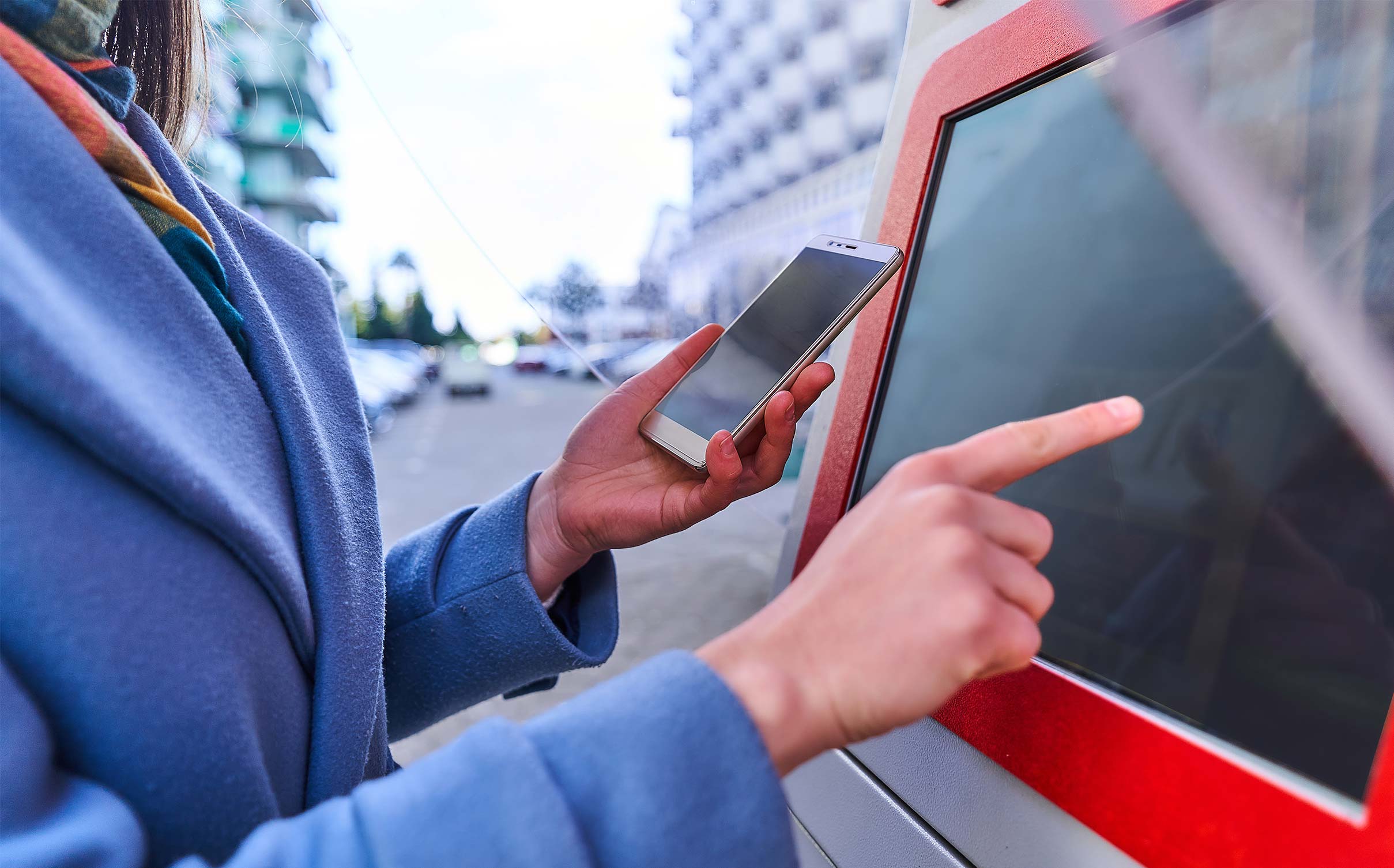 Wayfinding kiosks at public terminals
Wayfinding kiosks at public terminals
- Industrial usage – Different industries including airlines, retail, and hospitality make use of kiosks with business models specific to their verticals. All these kiosks are used for purchase transactions or for providing the customer access to menus, inventory availability, travel plans, and more.
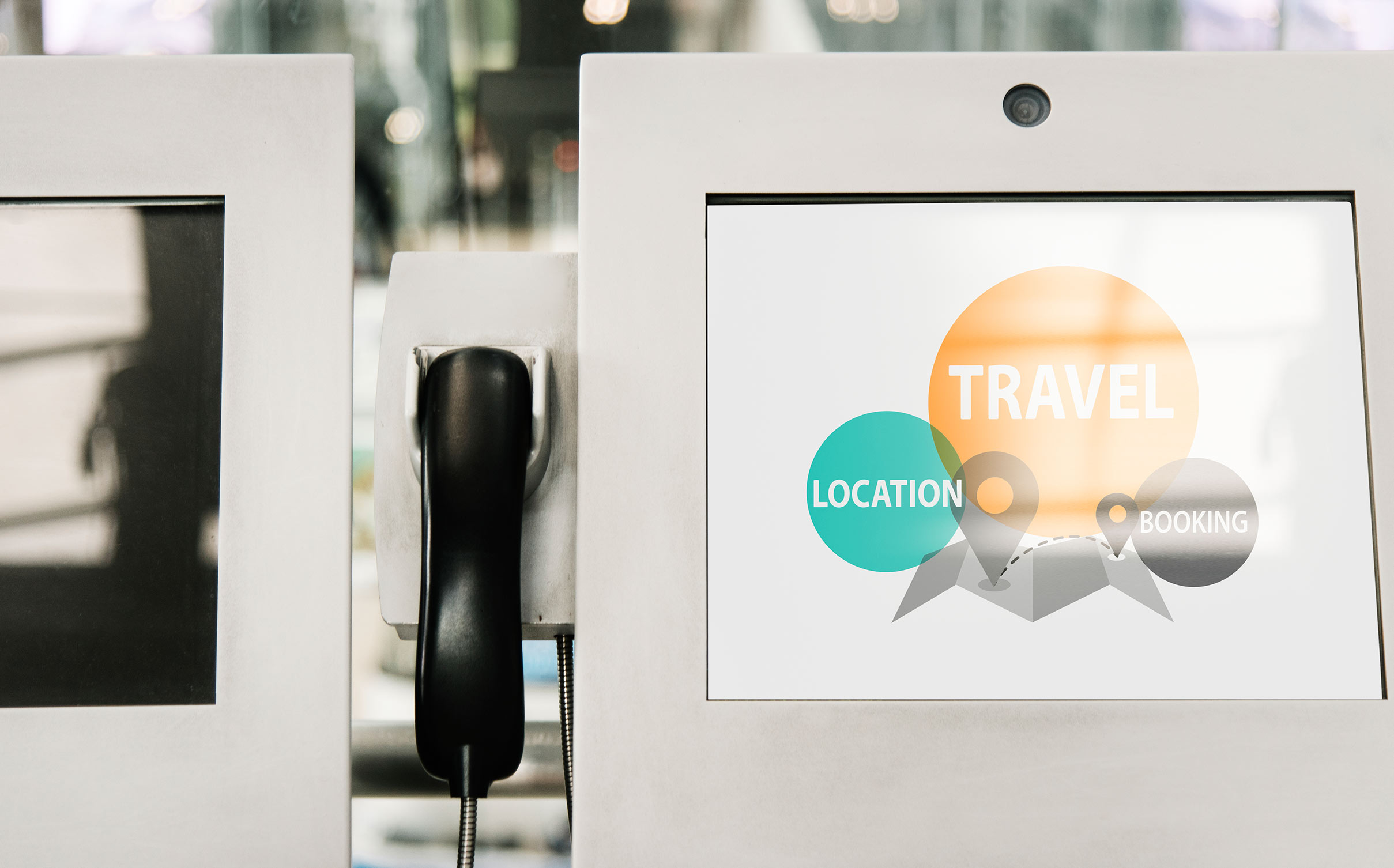 Self-service kiosks used in travelling industry
Self-service kiosks used in travelling industry
- Entertainment usage – Leisure centers, gyms, and amusement parks make use of self-service technology for check-in and payment processes for anything that requires a session payment. The ticketing kiosks act as a quick way to access all these services. The services provided by these self-service terminals eliminate the need for attendants in all these areas.
 Self-service kiosks at leisure centers
Self-service kiosks at leisure centers
Different types of self-service kiosks and their applications
From retail to wayfinding, to hospitality, self-servicing machines have got involved in engaging users and dispensing information everywhere. The fact is that it has become so common that most of the routine tasks will become impossible without them. Some common examples include:
- Self-service kiosks in healthcare
Self-service kiosks at hospitals allow patients to check-in for their scheduled appointments in a matter of seconds. Wherever the patients must make a payment, self-service machines can make it for them greatly relieving the workloads of hospital administrators. Such kiosks can also convey personalized messages to the patients which allows them to improve their health conditions. These terminals also let customers book appointments or request a refill. The self-care dispensing and self-care diagnostic kiosks help dispense simple medicines without the assistance of a clinician and conduct simple diagnostic tests.
- Self-service kiosks in travel and hospitality
 Self check-in at hotel
Self check-in at hotel
Self-service check-ins are found in almost all airports and transportation hubs to allow passengers to check-in by themselves. There are also self-service terminals to check-in to a hotel, book a dining reservation or a spa treatment, help find local attractions for the visitors, and provide a fast check-out process. Such kiosks can also serve as a method to display event information, change reservations, online booking of services like car rental, and more. For assisting those users who are unable to understand verbal instructions, these kinds of kiosks will be having language alternatives associated with them.
- Self-ordering kiosks at restaurants
 Self-ordering kiosks at restaurants
Self-ordering kiosks at restaurants
Quick service restaurants and other fast-food chains allow customers to order quickly without human assistance so that wait time is reduced for all. An online order can be placed for home delivery and parcel services. The automated restaurant ordering system enhances efficiency by allowing staff to concentrate on other areas of customer service. Further, pay and go kiosks at restaurants is a hassle-free option to reduce line time at cash counters. These kiosks can be used internally as well as externally so that even if the restaurant is closed, payment can be done from the outdoor kiosks. These self-service terminals are highly customizable and have provisions to assist persons with disabilities.
- Self-service kiosks in banking
Self-service kiosks at banks, wealth management companies, insurance companies, and other financial institutions help customers to perform transactions without the need for face-to-face interaction with the staff. The service includes online banking, balance checking, opening new accounts, reviewing investment portfolios, fixing appointments with the personal banker, PIN activation, loan application, money order, check cashing and even dispensing cash cards. These multi-function financial service kiosks allow finding other financial products including mortgages, saving accounts, or insurance. They provide customers with the flexibility to manage their accounts anytime even outside the banking hours.
- Self-service kiosks in retail
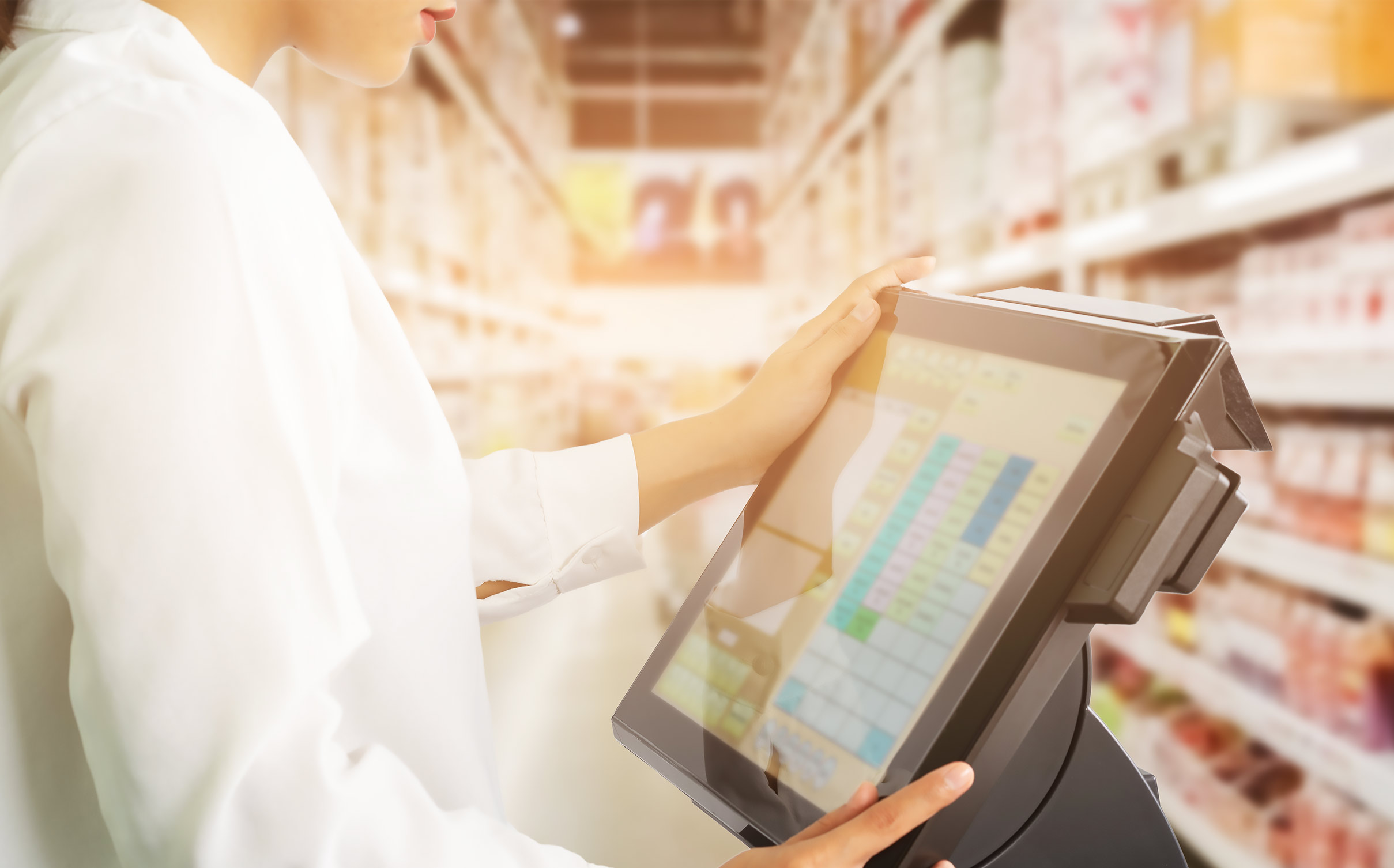 Self-service kiosks at retail stores
Self-service kiosks at retail stores
Self-service options in the retail industry replace sales assistants in many areas. There are self-sign in and self-checkout kiosks to reduce the wait times. Price checking devices and POS kiosks help in bill payments in retail and grocery stores. Other core functionalities of retail customer service kiosks include displaying targeted advertising at check-outs, getting information on discounts and pricing, displaying and printing out the map of the store and gathering customer feedback for improved services.
- Self-service kiosks at theatres
 Ticketing kiosks at movie theatres
Ticketing kiosks at movie theatres
Self-service ticketing kiosks at movie theatres allow people to purchase tickets and print them or pick up the tickets purchased online without waiting in long lines. Besides purchasing seats and selecting seat locations, self-service kiosks at movie theatres also make the check-in process smoother. Also, there are self-ordering kiosks to reduce the wait time for buying popcorns and eliminate the errors that occur while interacting with a counter person for the same.
- Self-service kiosks at offices
Employee self-service kiosks have a list of benefits when used within any business environment. Document printing and scanning kiosks can help HRs in need of a printing solution. The visitor management and security kiosk can manage the visitor check-in process at the business. The HR self-service kiosks at offices help in finding out payroll, employee shift or timing information, employee training materials, appointment scheduling, and upcoming events without the need for direct interaction with the HR department. The wayfinding and directory kiosks help in checking the availability of meeting rooms and locating employees within the office building.
Self-service kiosks to fight the COVID’19 pandemic
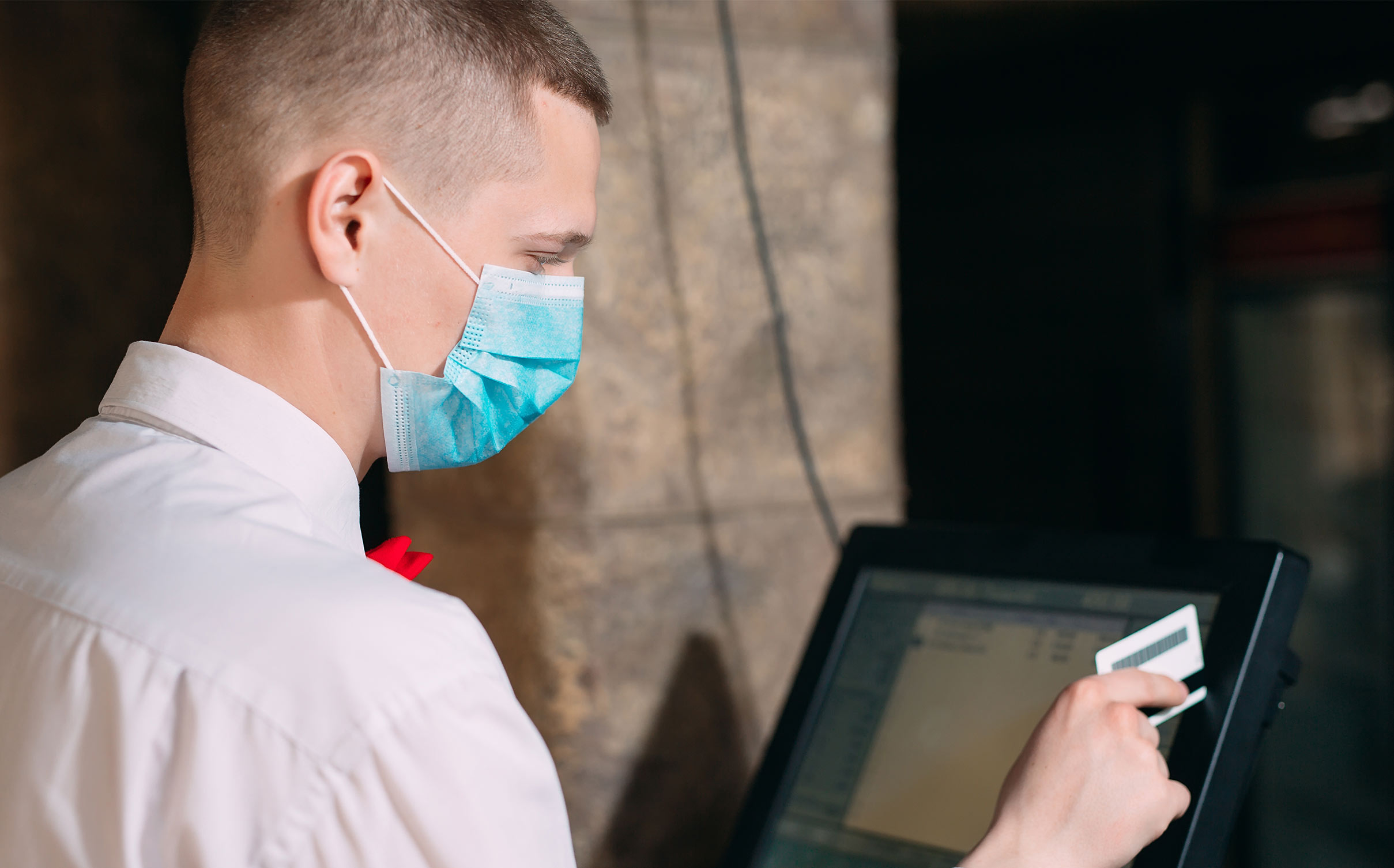 Self payment kiosk
Self payment kiosk
Self-service kiosks can help reduce the risk of virus transmission in many areas by limiting our exposure to a large number of people. Many industries can make use of self-serving to reduce human-to-human interactions in most of the day-to-day tasks by replacing that interaction with a human-to-machine interface. There are different ways by which self-service technology can help fight COVID’19:
- Eliminating the need for person-to-person interaction
Close proximity and physical contact are sure to escalate the chance for exposure and therefore using self-service kiosks in any industry can help in mitigating the risk. Self-check in kiosks helps in preventing the transmission of disease from the long queues at the reception desks. POS and bill payment kiosks prevent passing back and forth of credit cards and other payment modes which can act as another virus transmitter.
- Helps in maintaining user confidence
 Ticketing kiosks
Ticketing kiosks
People can remain confident that they are not exposed to any viruses when they are using a properly maintained self-service terminal instead of interacting with humans. Hand sanitizers or anti-bacterial lotions placed at the kiosks can be used before and after touching the kiosk screen to avoid the transmission of microbes from one person to another. Staff personals should periodically clean the touchpad, screen, kiosk cabinet as well as air vents for further protection.
- Specialized kiosks to prevent virus transmission and the spread of COVID’19
There are different self-service terminals built specifically to meet COVID’19 safety requirements. Self-service machines with temperature recognition technologies kept at the door of different stores/hotels help to screen people based on their body temperatures and allow only those with normal temperature conditions to check-in. Temperature screening when integrated with the face recognition system will allow those employees with normal body temperature to swipe-in to the office premises. Payment devices have face pay services to allow payment without touching a panel. Besides, there are hand sanitizer vending machines and face mask dispensing terminals for meeting the sanitization requirements of the time.
Know the PROs and CONs
 Self service kiosk terminal for wayfinding
Self service kiosk terminal for wayfinding
Self-service systems come in lots of shapes and sizes ranging from small tablets in protective enclosures to wall mounts and stand-alone devices at free-standing stations. Along with the numerous benefits, they come loaded with the challenges associated with rough handling as they are often used in unprotective working environments. Depending on the sector in which they are to be used, it’s important to weigh the pros and cons of self-service kiosk technology to make more informed decisions while considering it for your business solution.
The benefits:
- Self-service kiosk act as a line-busting solution which grants the full control over buying and payment decisions to the customers.
- Self-ordering shortens wait times and free up sale staffs for other business critical tasks or personalized customer services.
- Self-ordering increases accuracy by eliminating errors occur while transferring written orders.
- In all sectors where they’re employed, self-service terminals provide enhanced customization to provide the full list of modifiers and personalization to cater it according to the customer needs.
- As users are completing their own requirements without any other interventions there is a greater chance for increased requirement determination and improved user satisfaction due to the high-value service functions.
- Self-service machines are always open and available and can essentially replace many of the human workers and facilitate a speedier workflow all of which contribute to resource savings for the businesses.
- Self-service systems can act as a multi-purpose terminal – the same point performing the billing and payment services for instance and thereby ensure that more people are served in a small span of time resulting in related profits for the businesses and a better experience for the customers.
- Self-service kiosks are easily adaptable and customizable as they can be updated at any time with the latest technologies without the need to replace the whole system.
The drawbacks:
- Self-service machines can’t replace workers in many areas. They can’t take the place of staff stocking shelves, assisting customers and answering their queries.
- You’ll need staff on hand to troubleshoot tech issues and maintain kiosk health.
- Self-service systems in some cases draw away workers from their primary duties.
- Poor integration of kiosks to the business system and exposure to the general public can result in a lack of security of unattended systems.
- Lack of proper analysis and planning will result in inefficient and costly systems.
- Lack of knowledge of kiosks technologies will result in frustrated customers.
- Occasional technical failure and downtime are inevitable for such systems and constant maintenance is needed.
- RFID-based check-in machines and EMF exposure can cause adverse effects on human health.
- Sometimes technologies build on a set of rules can result in disappointment and lack of social interaction among the people. Technologies aren’t flexible enough to understand specialized user requirements and in such cases, human assistance is vital.
Deployment considerations
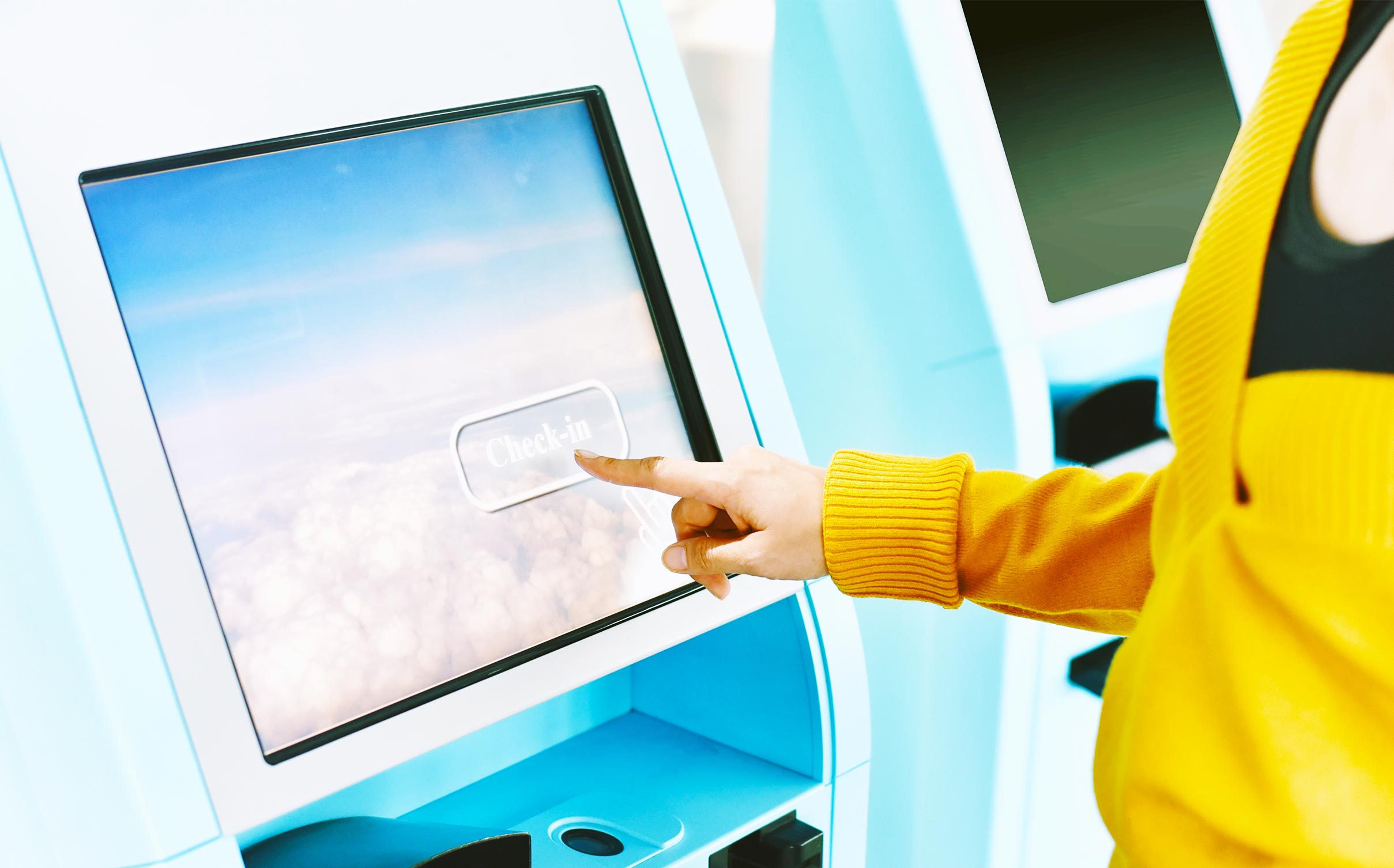 Self check-in at airports
Self check-in at airports
When businesses are taking human staffs out of the equation and incorporating machines in their places, workers are never sent out but are expected to take on a greater share of the work process in some other means, all of which is possible only with a clear-cut process planning. It’s true that the self-service kiosks can drastically improve the customer experience within your venue, but the diversity of customer landscape demands a variety of kiosk models to be designed tailored to each of the use cases and so a proper deployment strategy in place matter a lot. However, there are some potential trade-offs to consider checking if your kiosks are righty designed and properly deployed.
- Make sure that your kiosks have the custom features your targeted customers seek for.
- Consider the working environment before choosing the kiosk model. If they are to be operated in hazardous conditions or high traffic environments, consider using ruggedized devices and enclosures.
- Make a list of the additional peripherals required for the proper functioning of the kiosks.
- Check if the investment will be financially viable and consider choosing the most cost-effective solution that will work across different sectors and purposes.
- Choose the appropriate model according to the complexity of tasks the self-service kiosk needs to carry out and consider planning for the right management strategy.
- Take advantage of the kiosk-specific security that third-party kiosk management solutions offer.
For self-service kiosks that are to be placed in a high traffic public terminal, the robustness of build is a prime factor to consider. With so many different needs like this, developing a cost-effective solution that outweighs the setup costs in a shorter term is the most challenging thing to achieve.
The Hexnode kiosk software
Regardless of what types of self-service kiosks you’re planning to implement, Hexnode has all the ingredients for a successful deployment. Along with offering multi-platform support, Hexnode provides solutions to fit with all the requirements of the clients, how complex that might be. In order to comfort them with an automated feel, Hexnode tries to make the kiosk functioning as simple and seamless as possible. Hexnode stays ahead of the curve in offering smart remote device management capabilities making it easier to scale self-service kiosks across an enterprise and add an extra layer of security to the hardware as well as the data residing in. Harness the potential of these features to develop scalable, reliable, engaging, and easy-to-maintain self-service systems:
What is Kiosk mode?
Learn how to set up kiosk mode using Hexnode MDM
The future of self-service kiosks
Self-service kiosks now integrate the latest intelligent and responsive technology elements like sensors and accelerators to power the devices with real-time information. They also make use of context-driven rules to make sure that the information provided by the kiosks is dynamic, relevant, and up to date. The future of self-service systems can be the integration of the Internet of Things (IoT) with self-servicing technologies. Such kiosks may respond to touchless gestures and even adopt by themselves to environmental changes. The appearance of more and more innovative technologies on the market adds on to the automating elements with the self-servicing terminals.
Self-service kiosks are good at bypassing the human element in many services and effectively slashing off the associated administrative costs. The key is to place a proper strategy to make the most out of them, achieve the most return on value, and provide the most to customers. Instead of spoiling the implementation with a poor plan consider using a robust management solution to make sure that your business thrives in the digital age with feature rich self-servicing gadgets.












Hei Meddaline!
Thank you for the kind comment 🙂. Glad you’ve found the article helpful!
I really did try to cover every angle, but I’m sure I missed one or more. Thankfully, this comment section is a great place for fleshing out more ideas!
Will definitely update the post with the points you’ve mentioned. Meanwhile, please check out our other kiosk-related articles. I hope you’ll find them helpful too.
Thanks again and take care!
Hi Alma!
Overall, I find the blog “What is a Self-service kiosk?” a very helpful article. It serves as a guide to me when it comes to learning and understanding self-service kiosks. It is indeed informative content plus it is easy to navigate the topics covered in the blog. However, there are certain points which I suggest you should have included like the important features of a kiosk and key challenges of today’s technology automation when it comes to business solutions.